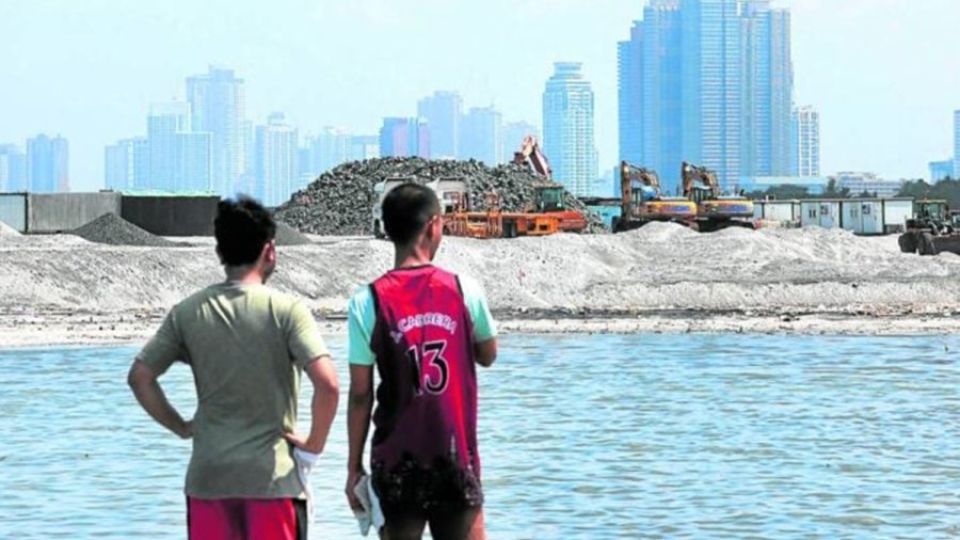August 18, 2023
MANILA – Fifteen years ago, the Supreme Court (SC) directed our government to remove all sources of pollution in Manila Bay. And what does the government do? It instead allows humongous factories of pollution to permanently set up shop in the heart of Manila Bay. What a big slap on the face of our highest court and a kick in the groin of our country.
These factories of pollution are the insanely numerous reclamation projects that are either already ongoing implementation or are in various stages of approval. Sources don’t agree on their total number—22 per the Department of Environment and Natural Resources (DENR), 25 according to the Philippine Reclamation Authority, and not less than 30 according to the fishermen’s group, the Pambansang Lakas ng Kilusang Mamamalakaya ng Pilipinas (Pamalakaya). Their combined area is more than 4,000 hectares, and they’re scattered from Bulacan to Cavite, but many are concentrated in the heart of Manila Bay.
The SC decision rendered in 2008 and which garnered world-acclaim for the Philippines in the field of environmental protection is the case of Metropolitan Manila Development Authority et al. v. Concerned Residents of Manila Bay. In this trailblazing case, the high court ordered 13 government agencies “to clean up, rehabilitate, and preserve Manila Bay,” and to restore its waters to a quality “fit for swimming, skin diving, and other forms of contact recreation.” The SC order is a “continuing mandamus” (continuing command) which set time-bound and specific responsibilities for the 13 government agencies, and utility companies, to attain the objective of cleaning up Manila Bay.
The high court designated the DENR as the primary government agency responsible for the implementation of the decision. But what does the DENR do? It has so far granted 21 of the reclamation projects with environmental clearance to proceed, according to Pamalakaya. To be fair to current DENR Secretary Maria Antonia Yulo-Loyzaga, these projects may have been approved during the Duterte administration. To be fair as well to President Marcos, he ordered 22 of the projects to stop, although temporarily. But the President has succumbed to political considerations because he has allowed one project to be exempt from his stoppage order, and he is even afraid to make the untouchable project to be named in public.
In 2011, I led a team of CenterLaw lawyers in filing an environmental case before the SC involving our country’s crown jewel—the world-famous Boracay island. Aklan province came up with the ridiculous idea of building 40-ha of reclamation project on both Boracay island and Caticlan, Malay municipality, Aklan province. The project would have narrowed the channel between Boracay and mainland Aklan, and could have led to the loss of the famous white sands of Boracay. Scientists found that the white sands alternately shift locations on the front and back sides of the island annually because of the channel’s natural currents. Changing the contours and width of the channel could lead to the permanent loss of the powdery white sands. After oral arguments where I crossed swords with the then solicitor general, the SC rendered a decision stopping the reclamation because of multiple violations of environmental laws.
It also appears that each project was assessed on their environmental impact as stand-alone obstructions on the bay. If this is so, it’s an outright abdication of duty on the part of the DENR. All the 20-30 reclamation projects must be lumped together and their combined impact on the environment should have been examined.
As it is, so many Bulacan towns are experiencing unprecedented flooding, and people are pointing fingers at just one of the reclamation projects as the culprit. There are 17 principal river systems that drain into Manila Bay from Pampanga to Cavite, and with hundreds of thousands of tons, if not millions, of gravel and soil that are planned to be dumped on Manila Bay, there seems to be a confidential master plan to transform Metro Manila into the Venice of Asia. I hope the government will make the plan public soon, so I can dash to the nearest dealership and be first in line to buy a boat.


